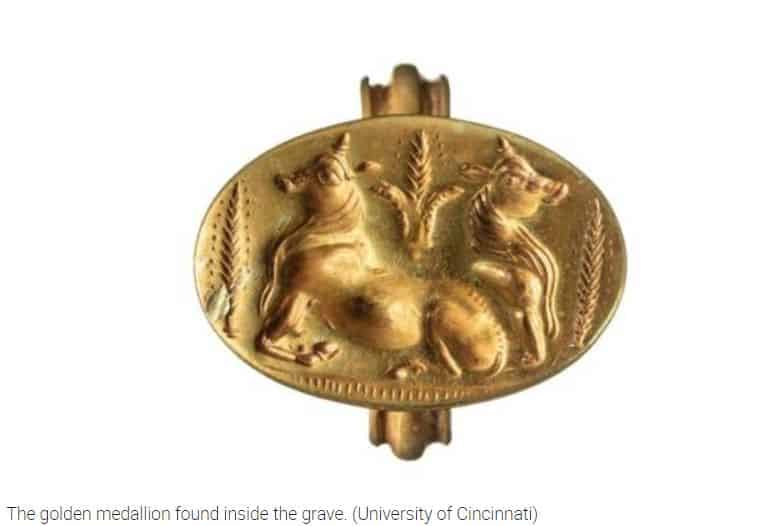The thieves looted the room shortly after it was sealed, but the remains of golden material on the floor of the cabin show that it was covered with gold
More than 35 centuries ago, its walls were covered with gold, although today there is hardly any trace of it. A team of archaeologists from the University of Cincinnati (Ohio, United States) has just published a report that analyzes the characteristics of a Greek tomb from the Bronze Age located in Pilos, southwest of the Peloponnese. In addition to having a circular shape, the cabin, in its day, was luxuriously decorated.
The thieves looted the room shortly after it was sealed, but the tiny remains of golden material on the floor of the room show that, years ago, it was covered with gold. In addition, the researchers found inside a gold medal with a relief that shows two bulls next to a sheaf of grain; a valuable sample that adds to the scarce collection of Mycenaean art – between 1600 BC and 1200 BC – known until today.

In fact, archaeologists believe that it may be the oldest representation of livestock and agricultural elements together; what will allow to deepen in the study of the religious traditions of this period.
Near this site, the researchers found another grave in 2015; of a warrior this time, which they named as ‘Griffin Warrior’ (or ‘tap warrior’), also dated on dates similar to those of this latest find. This military leader was buried with valuable jewels, his armour and several of his weapons.
Due to the presence of semi-precious stones among the materials inside the newly analyzed tomb, scholars believe that their owners – for now, anonymous; Nicknamed Tholos VI and VII— they were rich merchants. The enclave in which these remains have been found and the relevance of these agree, in turn, with the enormous popularity that this area had for the exchange of goods during the Mycenaean era.